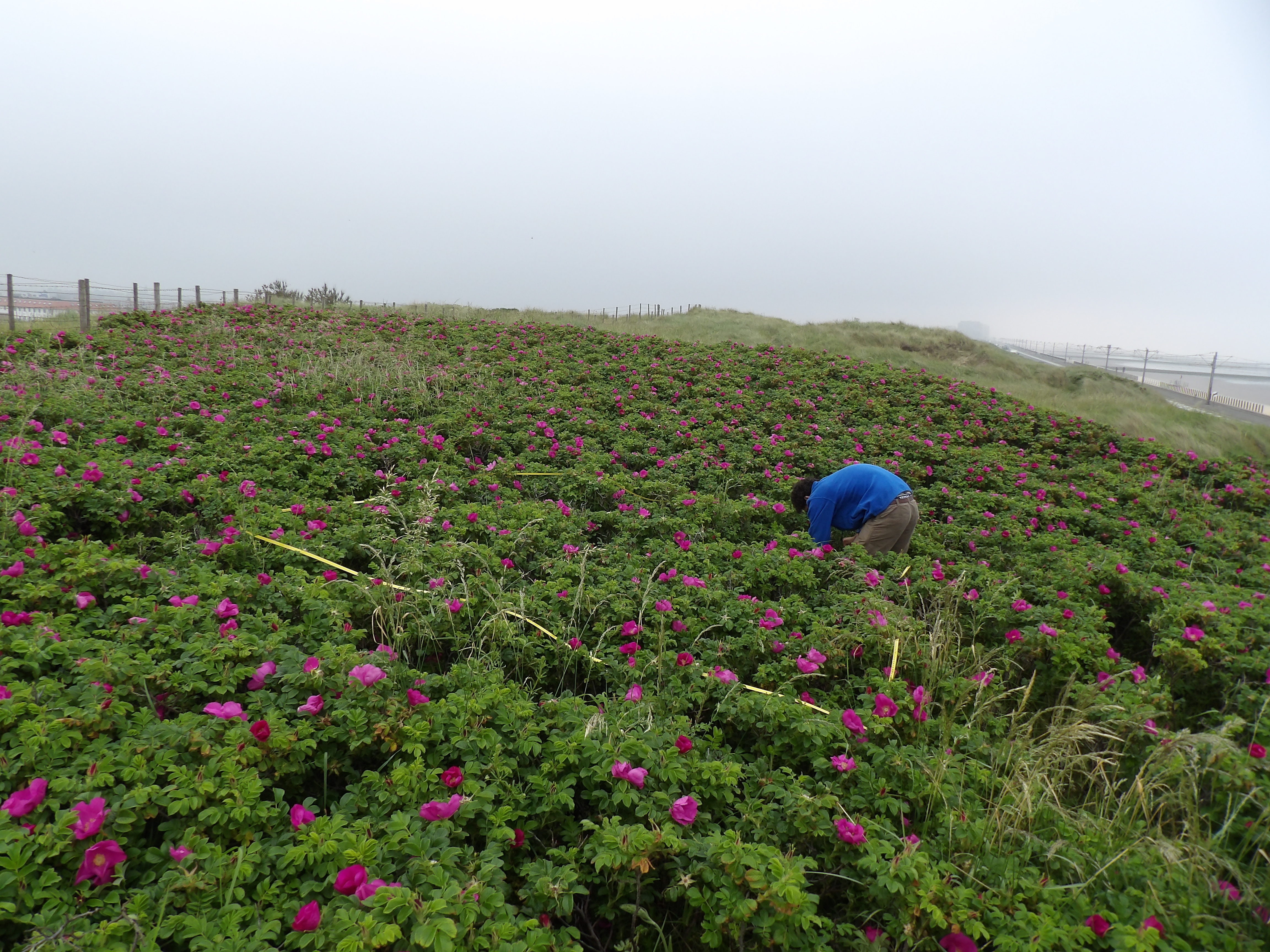(guest post by lead author Kenny Helsen)
Invasive plant species are considered problematic in many parts of the world due to their impact on ecosystem composition and functioning. Invasion ecologists have tried to identify what characteristics make some species successful invaders, but others not.
One theory that has emerged from this work states that invader success is largely driven by the ‘functional distinctiveness’ between the invader and the resident species of the invaded communities.
This functional distinctiveness can be quantified by measuring relevant functional traits, i.e. features of the plant linked to its shape, function or life cycle that relate to its growth, survival or reproduction. This functional distinctiveness can occurs for traits that make the invader competitively superior to the resident species, such as large plant size. However, also differences in traits related to the niche of the invader can be important. In this case, the invader will be successful because it minimizes competition, by using different resources (i.e. having a different niche) than the resident species.
The story becomes a little more complicated though. Functional traits are not fixed at the species level, and considerable intraspecific trait variation occurs for many traits in most species. This means that the trait composition of a community might change when invaded, in response to the competition and shading by the invader. Furthermore, certain resident species in the community might have similar traits as the invader. In this case, invasion can result in their local extinction due to competitive exclusion. Consequently, the functional distinctiveness of the invader is likely much more pronounced compared to the community after invasion than compared to the community prior to invasion.
In our study published this week in Oikos, we explored the functional distinctiveness for two Asian plants that are strongly invasive in NW-Europe; Himalayan balsam (Impatiens glandulifera, above) and Japanese beach rose (Rosa rugosa, below). To achieve this goal we evaluated the multidimensional functional trait overlap between the invaders and 1) the invaded community and 2) a nearby uninvaded community.
The results of our study were somewhat surprising. As expected, the functional trait overlap between both invaders and the invaded communities was relatively low (thus suggesting high functional distinctiveness of the invaders). However, only for Japanese beach rose was the trait overlap higher with the uninvaded than with the invaded community. For Himalayan balsam, trait overlap actually increased following invasion (see below). This shows that the story is likely more complicated and that other important processes are also shaping trait patterns of invaded communities.




